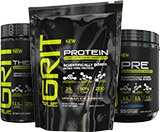
What You Can Learn From An Old Gym Rat
The iron game warriors who have been at it for decades can help you do the same if you listen. Here's how to keep lifting for a lifetime!
Hang around in the fitness industry long enough, and you'll see it's just like everything else. Fashion, music, technology, movies, books—and yeah, fitness—all revolve through phases. Trends rise and fall, and the masses follow one day and jump off the next.
Meanwhile, in the background, there's a special community of people who never seem to pay attention to trends, and they're doing just fine. Such as your uncle, who has been watching "The Magnificent Seven" at least once a month since before you were born, and will gladly recite it by memory for you. Or your grandma, who still picks up a rotary phone when you call and is no worse for wear.
In the world of strength, the equivalent is found in the older gym rats. These guys and gals have spent 20 or 30 years in the trenches, training hard and watching gym equipment rotate around them. They keep their noses to the grindstone and lift like clockwork, and they've usually got the dense, mature muscle development to show for it. I'm not talking about someone who is 30 or 35 either. I mean the ones who are 45, 50, and even 60.
If your gym has none of these characters, it's probably a good idea for you to relocate. Maybe they're there, but they just haven't acknowledged you with that telltale head nod yet. As for me, I've been fortunate enough to interact with a number of ageless specimens during my time in the industry. Here's what they shared with me that you should take to heart.
Lesson 1 It's not all about science
Right now, the fitness industry is in, for lack of a better term, a "scientific phase." By this, I mean that everyone is eager to pretend to be a scientist. Pint-sized Internet trolls seem—emphasis on "seem"—incredibly well-versed in the latest scientific literature on the topic of strength and conditioning. Similarly, many trainees feel like they need a page of footnotes backing up every decision they make in the gym, from which program to choose to how to hold the bar.
To be clear, I'm not opposed to formal academic studies, certs and degrees, and all the knowledge that comes from them. I actually appreciate and utilize all of them. I also see how they can get in the way of some perfectly adequate training. For you, the trainee, what you read on PubMed usually has a lot less carryover than you imagine—and you're probably not qualified to understand the real takeaway. Simply put, your self-directed research means nothing if you can't find a balance between theoretical learning and practical application.
You'll learn a lot more from doing than from endlessly analyzing. Action and practice develop grit, which can teach you as much as any study. Long-time gym rats know this well.

Lesson 2 Ignore what's trending and train old school
Before trainers knew the best way to recruit high-threshold motor units in select muscle groups to optimize both sarcoplasmic and myofibrillar hypertrophy, people were still getting big and strong. Before pre-workout, peri-workout, and recovery supplements were "necessary" for gains, and different commercialized methods of training were still a twinkle in some marketer's eye, people were getting big and strong.
How'd they do it? They did what made sense and what felt good.
Imagine yourself seeing a barbell on the ground for the very first time. What would you do? You'd pick it up—maybe a few times. Then maybe you'd press it over your head, squat underneath it, or lunge with it on your back. If you walked past a pull-up bar, you'd do some pull-ups. You'd rest for a while. Then you'd do a few more. Afterward, you'd be hungry. So you'd eat. When you were full, you'd stop.
The message here: Assistance exercises and intricate nutritional plans have their place, but their real purpose should be improving the quality and performance of primal movements like squats, deadlifts, overhead presses, pull-ups, and lunges. They're what will sustain you for the long term. Likewise, don't sit around counting grains of brown rice like your life depends on it. Figure out what nutritional approach makes your workouts work better, and follow it.
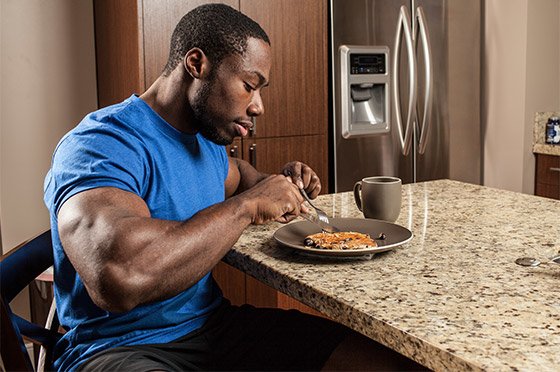
Lesson 3 Listen to your body first and your program second
Many acclaimed workouts ask for a certain amount of sets and reps, or a certain low rest interval, or select pairings of exercises. But when you try them, you're miserable, and you can tell you're not getting what you're supposed to out of the workout. So you change it. And alarm bells go off, and your gains all disappear in a moment.
Or not. Just because you don't follow the exact protocol doesn't mean a program is worthless to you. On the contrary, becoming a prisoner to your program and losing your ability to train intuitively is probably the biggest mistake you can make as a maturing lifter.
No two bodies are made the same, and certain exercises or protocols will have different effects on certain people. Some people benefit from training in a 6-8 rep range with most movements, while others get better results from a 10-12 rep range—and both lifters might change over time.
As I explained in "Four Training Mods for Big Bods," taller lifters with long extremities often respond to high-volume squatting differently than shorter lifters. Similarly, bigger lifters with plenty of muscle mass will respond to low-rest training methods differently than lighter ones with less muscle. On a similar note, certain assistance exercises may elicit a great pump for some, but simply cause joint pain for others.
Within reason, being able to modify things on the fly can be the hidden secret toward sustainable gains. So don't sweat it. There’s a big, big difference between training with grit, and simply gritting your teeth through a painful movement you know you shouldn’t be trying.
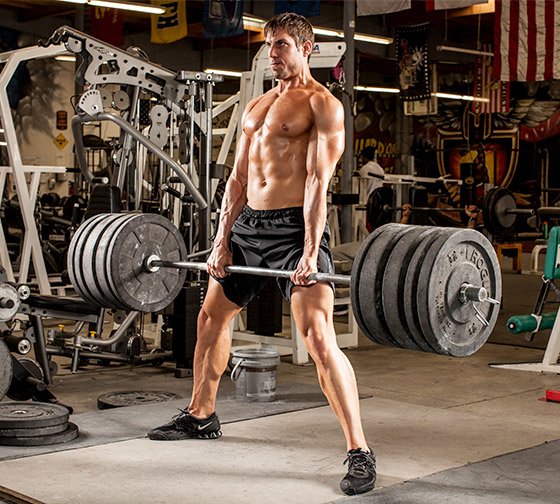
Lesson 4 Start with strength
Anytime I've spoken to an impressive seasoned vet about how they got their start, they've answered that they built their foundation by training for strength, not just size. There are a couple of reasons why I like this idea.
First of all, sticking to lower reps when starting out actually reduces the potential for technical breakdown. Even though the added load does increase exertion, muscular fatigue doesn't have much of a chance of entering the picture due to the short rep range and set duration. For someone starting out, this actually helps ingrain motor patterns and teaches you to keep safety in mind. If you know the weight you're lifting can hurt you, you may take the idea of "good form" a bit more seriously.
Secondly, guys who are just starting out on the quest for size and strength are also often fairly young—and their HGH and testosterone levels will be extremely high. Knowing this, blasting the central nervous system to release those hormones through low-rep training is a smart move.
Lastly, it's easier to get big once you're strong, especially since you can get ahead of the little things that often hinder high-volume, size-focused workouts. For instance, poor grip strength, lower-back weakness, and general adaptations to joint stress can all be minimized by training with heavy loads using good technique.
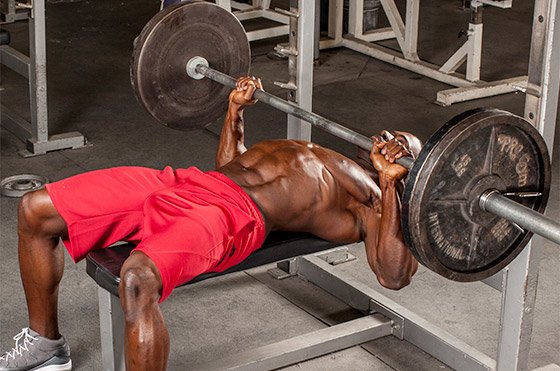
Lift for a Lifetime
Remember, the uniform for the form police usually comes in size small. That's not to say that technical knowledge should go out the window, but wisdom that comes with experience surpasses almost everything where your personal development is concerned.
Grit isn’t just the stuff you’ll find in the bottom of an old gym rat’s duffel; it’s in their program, the pre-lift ritual, and their overall mindset. Take a page out of their book, and train to be in this game for the long haul.
Recommended For You
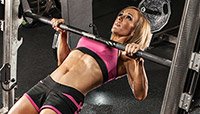
4 Great Back Exercises You've Never Tried
You've got a laundry list of tricks to add an inch to your arms. Why not do the same for your upper and middle back? Think outside the pull-down and make a bigger shadow walking down the street!
Beat Butt Wink: Squat Big Without Hurting Your Back
Something strange is happening at the bottom of many lifters' squats. It goes by the name of butt wink, and if it's severe, it puts their back health and lift numbers at risk. Here's what you need to know!


